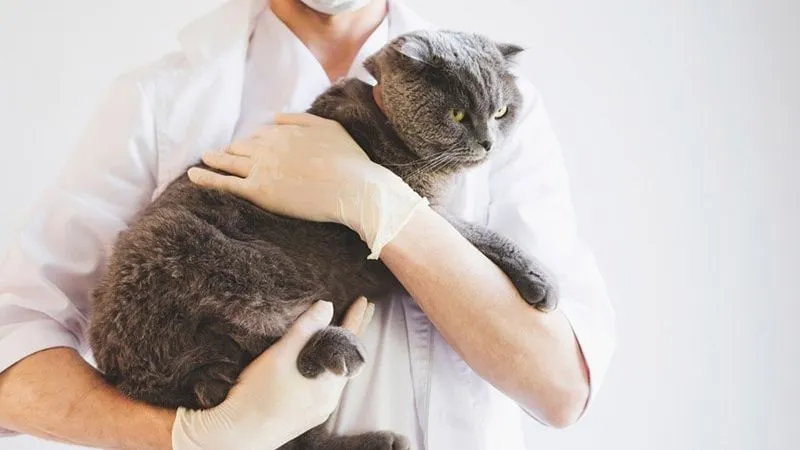Fibrosarcoma, a form of cancer that primarily affects connective tissues, can be a distressing diagnosis for cat owners. This article aims to shed light on the stages of feline fibrosarcoma, offering valuable insights into its progression and treatment options. We’ll delve deep into this topic, providing you with a comprehensive understanding of how this disease develops and the steps you can take to ensure the best possible care for your beloved feline companion.
Introduction
Feline fibrosarcoma is a malignant tumor that can develop in various connective tissues of a cat’s body. While this diagnosis can be intimidating, understanding its stages and treatment options is crucial for ensuring the best possible outcome for your feline friend.
Fibrosarcoma originates in the fibrous tissues of the body, such as tendons and ligaments. It is known for its aggressive nature and the potential to spread to other parts of the body. Recognizing its early signs is vital for prompt intervention.
Recognizing the Early Signs
Early detection is key to managing feline fibrosarcoma. Keep an eye out for symptoms like lumps or swelling, lameness, and discomfort, as these could be indicative of the disease.
Diagnosis and Staging
Upon suspecting fibrosarcoma, your veterinarian will conduct a series of tests to determine the extent of the disease. This process involves staging, which helps assess how far the cancer has progressed.
Stage 1: Localized Fibrosarcoma
In its initial stage, fibrosarcoma is confined to a specific area. Surgical removal of the tumor is often successful in these cases.
Stage 2: Regional Spread
When fibrosarcoma begins to spread to nearby tissues and lymph nodes, a more comprehensive treatment approach is required. This may involve surgery, radiation therapy, or a combination of both.
Stage 3: Distant Metastasis
In its advanced stages, fibrosarcoma can metastasize to distant organs, making treatment more challenging. Chemotherapy and immunotherapy may be recommended to slow the progression of the disease.
Treatment Options
The treatment approach for feline fibrosarcoma varies depending on the stage and location of the tumor. Here are some common treatment options:
Surgical Interventions
Surgery is often the primary treatment for localized fibrosarcoma. The goal is to remove the tumor and surrounding affected tissues.
Radiation Therapy
Radiation therapy may be used to target and shrink tumors. It is especially effective when dealing with tumors in sensitive areas where surgery may not be feasible.
Chemotherapy
Chemotherapy drugs can help slow the growth of cancer cells and prevent them from spreading. They are typically used in more advanced cases of fibrosarcoma.
Immunotherapy
Immunotherapy aims to boost the cat’s immune system to fight the cancer cells. For a more thorough approach, it might be used in conjunction with other treatments.
Palliative Care
In cases where the cancer is advanced and cannot be completely treated, palliative care focuses on improving the cat’s quality of life and managing pain.
Coping with Feline Fibrosarcoma
Caring for a cat with fibrosarcoma can be emotionally challenging. Providing love and support, along with following your veterinarian’s guidance, can make a significant difference in your cat’s well-being.
Receiving a fibrosarcoma diagnosis for your feline friend can be emotionally challenging. Here are some additional tips on how to cope:
- Seek Support: Don’t hesitate to reach out to support groups or online communities of pet owners who have experienced similar situations. Sharing knowledge and guidance may be incredibly reassuring.
- Follow Veterinary Guidance: Trust your veterinarian’s recommendations and maintain open communication. They will guide you through treatment options and help you make the best decisions for your cat’s well-being.
- Provide Comfort: Ensure your cat’s environment is comfortable and stress-free. Offer cozy bedding, favorite toys, and gentle affection to keep your pet relaxed.
Conclusion
Feline fibrosarcoma is a complex disease with various stages, each requiring a different approach to treatment. Early detection and intervention are vital for a positive outcome. If you suspect your cat may have fibrosarcoma, consult your veterinarian immediately to discuss diagnosis and treatment options.
Frequently Asked Questions (FAQs)
1. Can feline fibrosarcoma be cured?
Feline fibrosarcoma can be treated, and in some cases, cured, especially if it is detected in its early stages. The success of treatment depends on various factors, including the stage of the disease and the cat’s overall health.
2. Is surgery the only treatment option for fibrosarcoma?
Surgery is a common treatment option, especially for localized fibrosarcoma. However, depending on the stage and location of the tumor, other treatments such as radiation therapy, chemotherapy, and immunotherapy may also be recommended.
3. How can I support my cat during fibrosarcoma treatment?
Supporting your cat during fibrosarcoma treatment involves providing a comfortable and stress-free environment, following your veterinarian’s recommendations for medication and care, and offering plenty of love and attention.
4. What is the prognosis for advanced-stage fibrosarcoma?
The prognosis for advanced-stage fibrosarcoma can be less optimistic, but it varies from case to case. Consult with your veterinarian to discuss the specific prognosis for your cat and the available treatment options.
5. Where can I find more information about feline fibrosarcoma?
For more detailed information and guidance on feline fibrosarcoma, consult with your veterinarian or refer to reputable veterinary websites and resources.
In conclusion, understanding the stages of feline fibrosarcoma is crucial for providing the best possible care for your cat. Early detection, prompt treatment, and ongoing support can make a significant difference in your feline companion’s quality of life and prognosis. If you suspect your cat may have fibrosarcoma, don’t hesitate to seek professional veterinary care.

